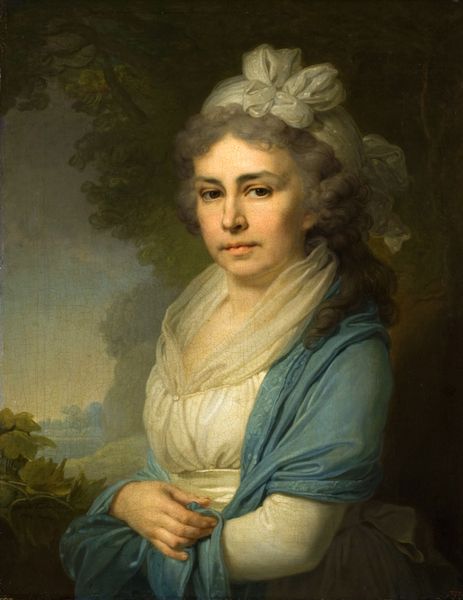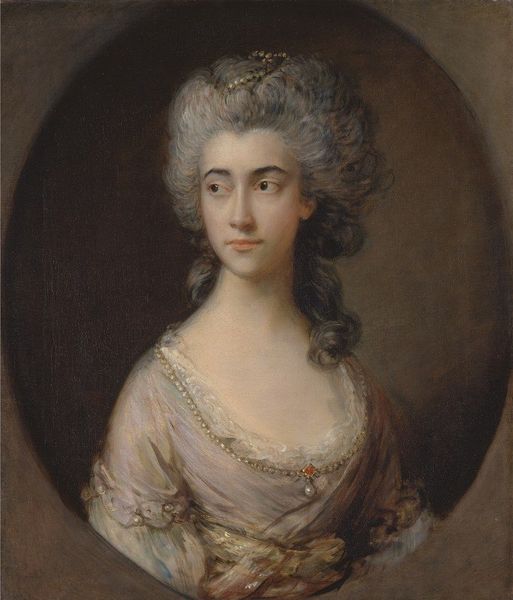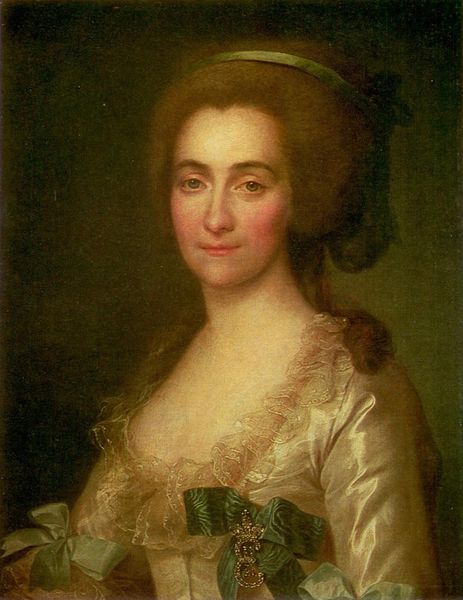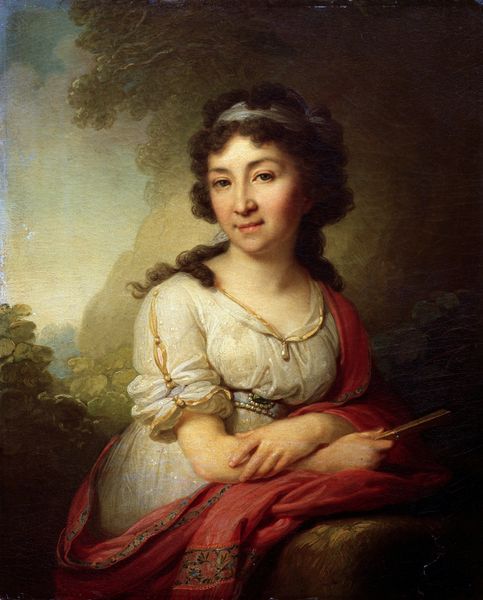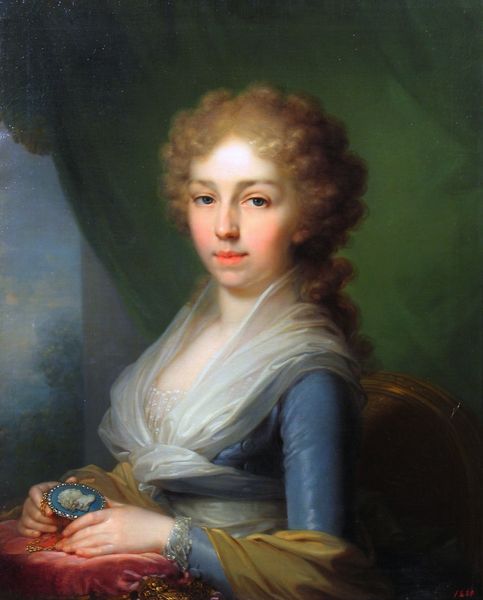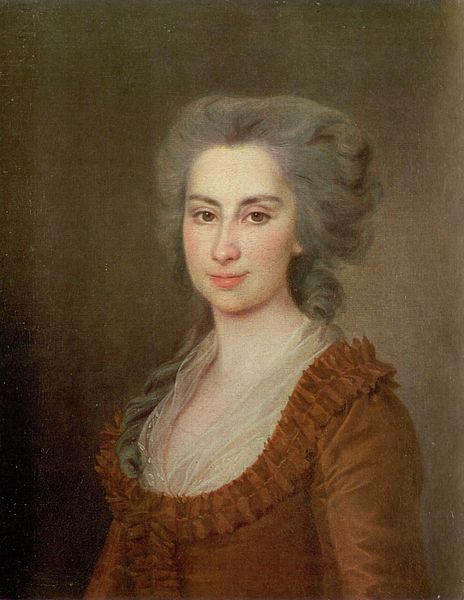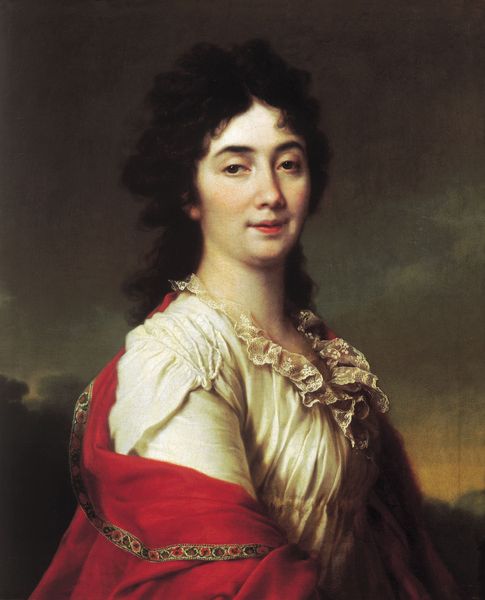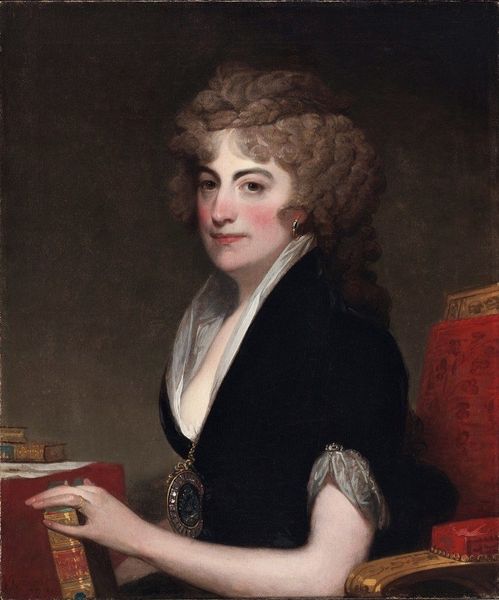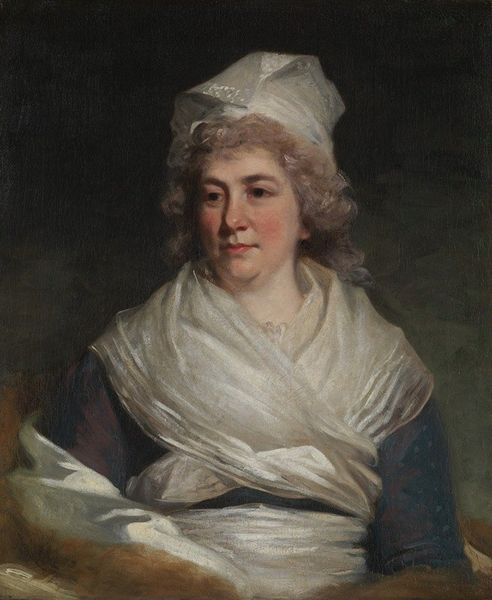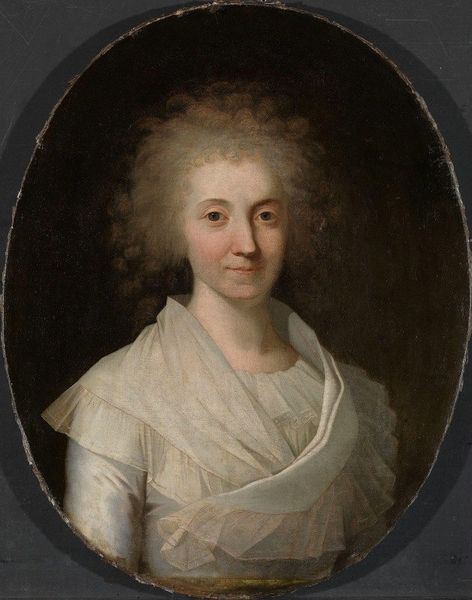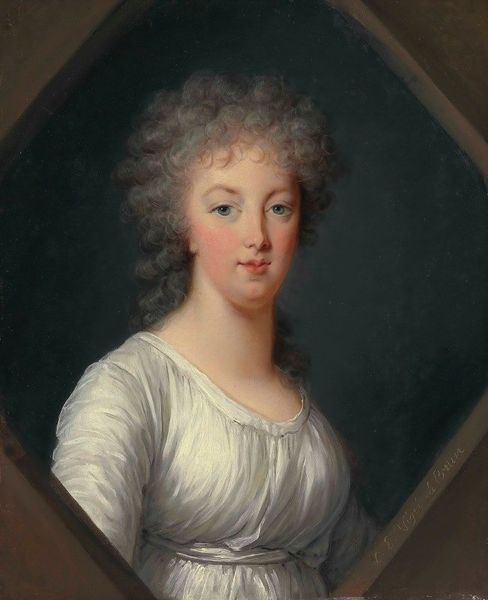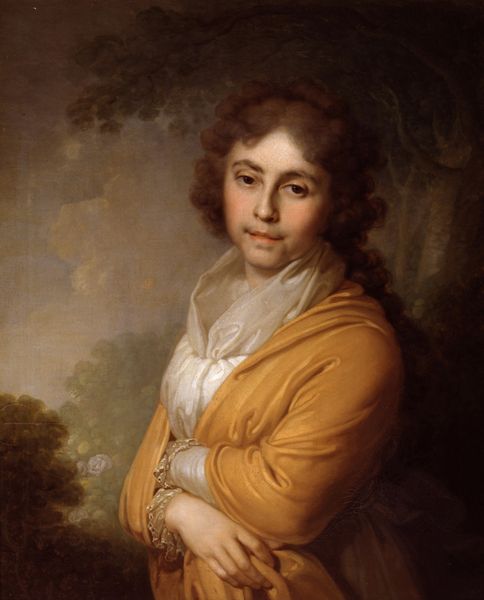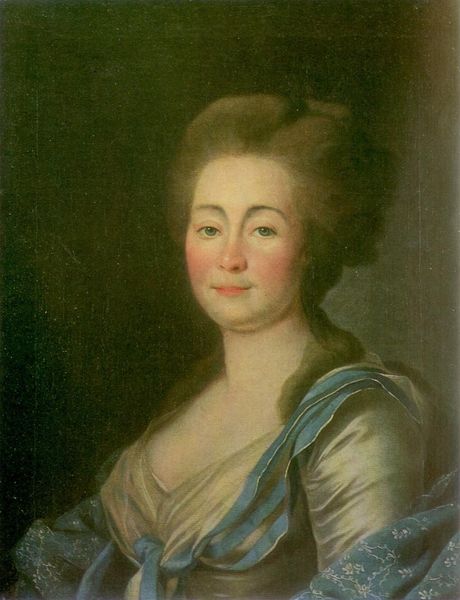
painting, oil-paint
#
portrait
#
painting
#
oil-paint
#
romanticism
Copyright: Public domain
Curator: Welcome. We're now viewing Vladimir Borovikovsky’s "Portrait of Ekaterina Aleksandrovna Novosiltseva." Painted with oil on canvas, it captures the sitter with remarkable grace, but I admit that it doesn't strike me in any deeply particular way. What are your initial impressions? Editor: My first impression is of gentleness. The soft colors, the way she's framed by the wispy trees… and of course, that sweet, innocent blue ribbon. There's a pervasive delicacy here, wouldn't you say? Curator: The softness undoubtedly reflects the burgeoning Romantic style that was then becoming fashionable, especially amongst the elite. We can see in Borovikovsky's work how aristocratic values started to shift toward valuing emotion, individualism, and a connection with the natural world. Editor: Absolutely, and that blue ribbon functions as a clear visual cue. The color blue itself often symbolizes loyalty and peace, and it draws your eye right to the sitter’s breast, signifying virtue, openness of heart, almost as if announcing her qualities to society. Curator: It is a lovely detail that, placed near her heart, communicates more than simple adornment. But how interesting to position such visual signals against the social realities of portraiture; these were images commissioned by families like the Novosiltsevs to perform very specific functions in articulating status and legitimacy. Editor: Of course, and even the setting is far from accidental. Those blurred trees are less a specific location and more an echo of Arcadian ideals – that kind of simple, natural existence to be so highly valued, it’s all symbolism! Curator: You’re right. And Borovikovsky manages to integrate this emerging Romantic symbolism within a genre deeply embedded in social performance and tradition. How successful he was remains debatable, of course, as tastes invariably shift, and context reframes perception. Editor: That's why looking at the visual cues in painting like this are so important, to not just see how it functions today, but how people at the time may have been viewing and understanding all this at the time. Thank you for providing that contextual layer! Curator: Likewise! It's through observing this piece that allows one to reflect on these socio-historical circumstances of 18th century Russia.
Comments
No comments
Be the first to comment and join the conversation on the ultimate creative platform.
